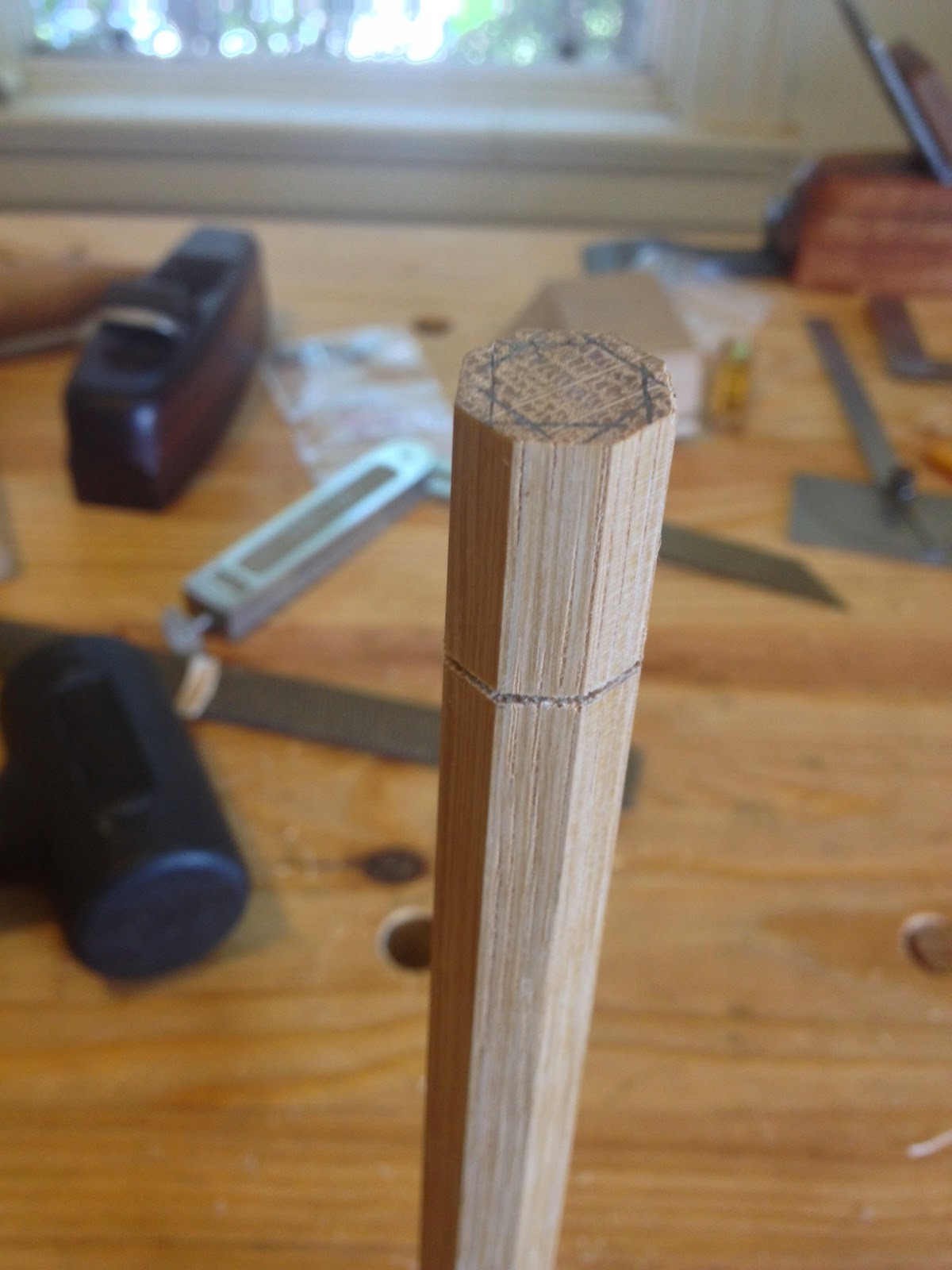Over the last few days I mocked up the top half of the chair I'm working on. This chair will have 7 narrow spindles, plus two somewhat beefier stiles on the ends. So the first step was to taper the bottom ends of the stiles to match my 5° reamer. Initially, I tried to do this freehand; the result was not bad but it took forever. So, I decided to make a tapered tenon reamer. This was easy to do and worked well.
The first step was to bore and ream a hole in a piece of scrap. I reamed at slight angle, squaring the body of the reamer to the side of the scrap piece.
Then I planed the side until I opened up a slot of even width,
and then cleaned up the slot and bolted a plane frog on.
Peter Galbert, in this post, recommends using a Bedrock frog, which is kind of funny because Bedrock anything sells at a premium on the used market. I'm sure a plane Jane frog would be fine, but it just so happens that I have a bunch of spare Bedrock parts--some Ebay criminal sold me a dud years ago that I never got around to fixing up.
The tenoner worked great, although I fouled up the hole on my second try and had to redo it. The lesson I learned is that the tenoner works best--at least for me--as a finishing tool, after I had already shaped the tenon pretty close to its final size.
The other ends of the stiles have shouldered, untapered tenons. I found these much easier to cut freehand. With my stiles still in octagonal form, I marked off the tenon with a combination square and cut the shoulder all the way around with a backsaw.
Then I just used a chisel to split off the waste.
I split conservatively, and then pared to the lines. I concentrated on making as accurate a square section as I could first.
Then, I made an octagon, and finally shaved the corners off the octagon to get a pretty nice round tenon.
I didn't want to drill into one of my nice steam-bent oak crest rails without experimenting first, so I mocked up a rail out of cheapo spruce construction lumber. I just traced out the pattern twice on a 2 x 6, and laminated the pieces together. Here was my initial mockup, with no spindles, just the stiles.
I'm really glad I did this. I learned two big things. First, it was too high. At this height, the top of the crest rail would finish at about 37" high. It was really uncomfortable, but dropping it down to around 35.5" made a big difference.
Second, the crest rail initially had the same backward-sloping angle as the stiles. This caused the bottom of the crest rail to dig into my back. Angling it forward a little helped a lot. I redrilled the holes and postioned the spindles approximately where I'd like them to go:
The spindles obviously need to be thinned a lot. But this looks good enough that I'm ready to start working on the real thing, finally...









No comments:
Post a Comment